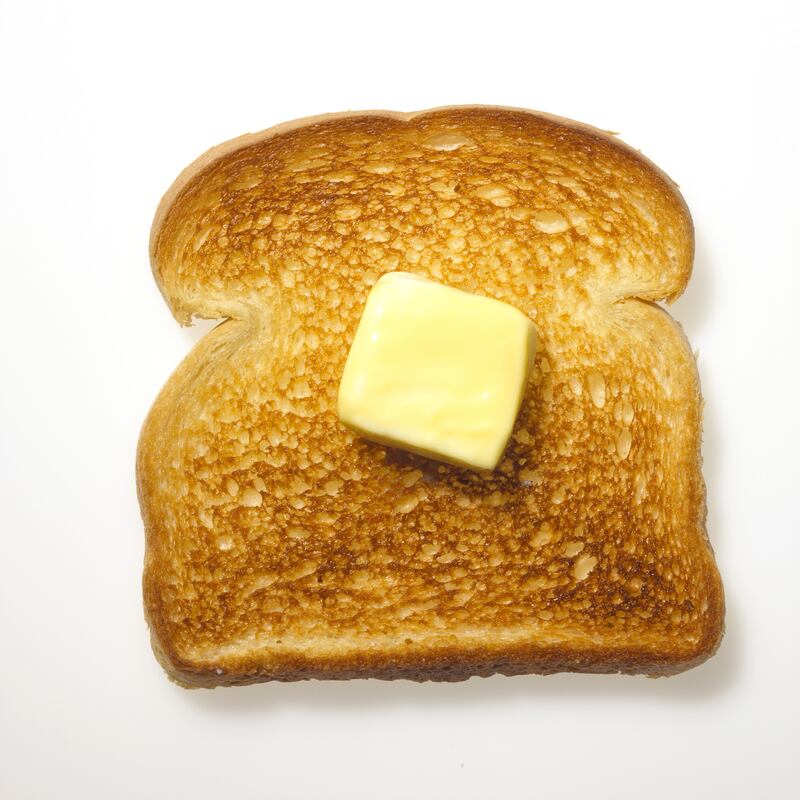“I can’t believe it’s butter, not at that price,” is something shoppers may have found themselves exclaiming to themselves as they wandered the aisles of Ireland’s supermarkets since the start of the year.
While Kerrygold – the market leader by a country mile – has climbed in price in recent months, the increases for own-brand butter ranges have perhaps been more striking. They will certainly have hit those on lower incomes hardest.
Anyone looking for the cheapest butter to spread on their morning toast has had to contend with a hike of more than 36 per cent in less than six months, almost six times the rate of general inflation.
But percentages don’t really paint the complete picture. In the run-up to Christmas, the price of 454g of own-brand butter across any of Ireland’s main supermarkets was €2.19. Early in the new year, the price jumped by 10c, and then another 20c, and then 40c, with another 10c added to the bottom line in recent days.
READ MORE

Successive increases mean that the cost of 454g of the cheapest butter in Ireland is now €2.99, a price which may cause shoppers to scratch their heads in wonder, not least because – unlike many of the products on our supermarket shelves – the levers of production are almost entirely pulled in Ireland.
And there is no indication that we are done just yet with the 2022 price hikes for this one product.
So, what is going on? The price of almost everything has been climbing since the start of the year, with Irish retailers and producers blaming external forces including Russia’s invasion of Ukraine and a severe spike in energy costs.
But given that virtually all the butter on the Irish market is produced locally, with the main ingredient – milk - coming from Irish cows, far removed from the front lines of the war in Ukraine, why are Irish shoppers feeling it in their pocket?
When asked why its butter prices had climbed so high so fast, a Lidl spokeswoman said she had to “point to the fact that the price of milk paid to Irish farmers has been rising almost every single month for the past 20 months”.
Net exporter
She said the year-on-year percentage difference between April 2021 and April 2022 was 49 per cent, while the EU butter price has increased over 70 per cent
“However, the Irish retail price has increase by just 36 per cent. As well as the cost of milk, there are costs for fertiliser and feed, as well as a reduction in global milk production, which is continuing to drive global and local [Irish] milk prices higher each month. As Ireland is a net exporter of the raw material, the Irish price for milk is entirely influenced by global market developments.”
Aldi said its butter costs were linked to the EU butter EEX Index, “which outlines how much a tonne of butter will cost a supplier. The cost per tonne of butter has almost doubled since July 2021”.
Supervalu echoed the responses of both Aldi and Lidl, as did Tesco, while Dunnes Stores did not respond to queries from The Irish Times.
As for Kerrygold, it said an “increase in input costs is, unfortunately, being felt across the whole agricultural sector and this is putting pressure on all processors. Where possible, we will always endeavour not to pass these onto consumers. However, in some cases it is unavoidable.”
While the milk price currently being paid to farmers by producers, including butter makers, is unusually high at close to 50c a litre, there is no suggest that those at the source of all Irish butter are milking it.
“Milk prices are higher than they were but the flipside of that is that the cost of production has shot up,” says Niall Madigan of the Irish Farmers Association. “Everyone looks at the headline price and that is understandable, but the fuller picture has to take into account input costs.”
Energy, feed and fertiliser have soared in price and that is, Madigan says, “the hot button issue in the industry”.
Fertiliser prices
According to the agricultural input price index published earlier this month by the Central Statistics Office, fertiliser prices jumped by 149 per cent in the year to March 2022 and climbed by close to 12 per cent in February alone. Energy and feed prices are up 54.9 per cent and 22.6 per cent respectively in the year up to the end of March.
But price inflation in Ireland is not the only factor driving up the price of butter. Ireland is a big player in the world butter market and punches far above its weight, producing around 265,000 tonnes or around 12 per cent of the European market, third only behind Germany and France.
Most of what we produce ends up on global markets and is susceptible to the vagaries of the commodities market. The average European butter price jumped by 28 per cent in the fourth quarter of 2021 due to a fall in butter production and a spike in consumer demand. Then Russia invaded Ukraine and everything got much worse. Things are not likely to get much better any time soon.










